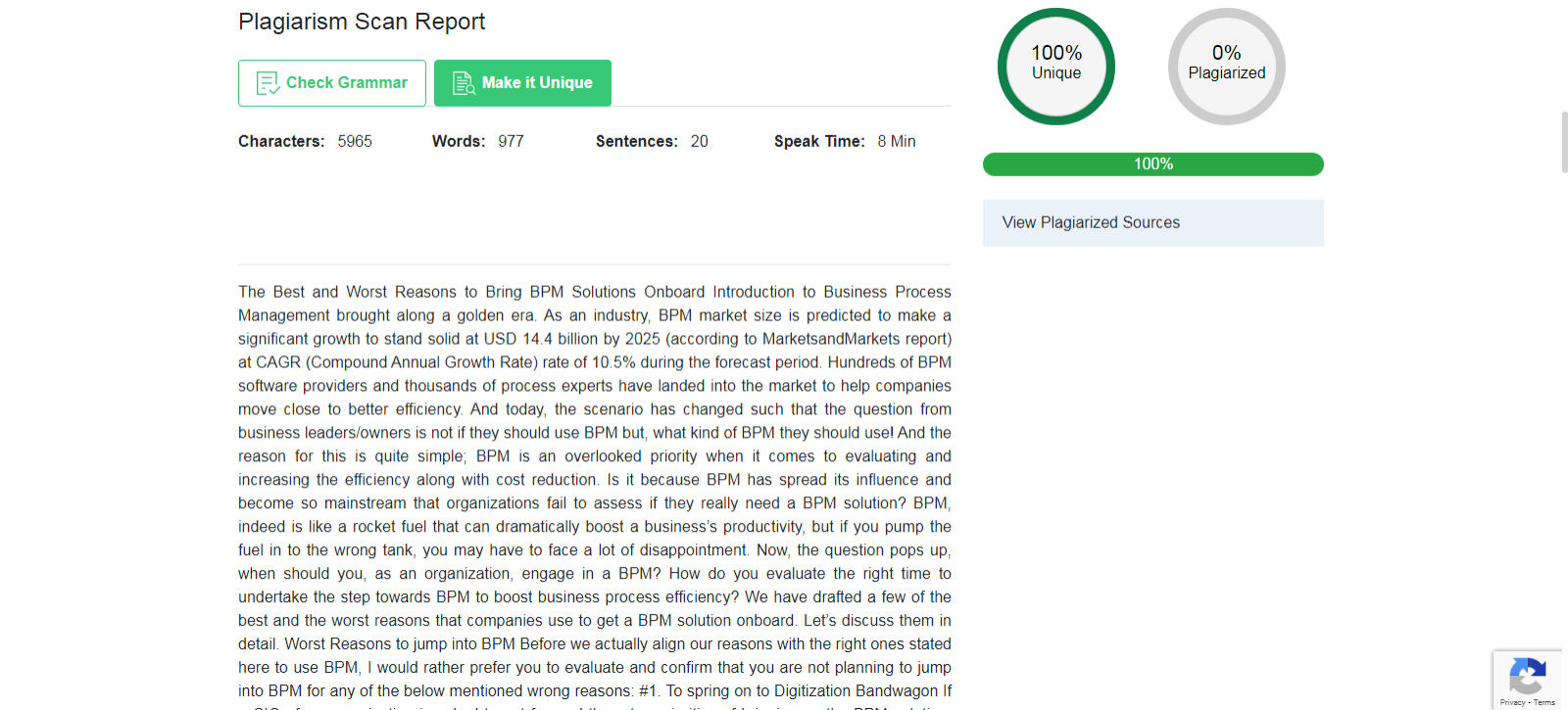What are The Best and Worst Reasons to Bring BPM Solutions Onboard
Introduction to Business Process Management brought along a golden era. As an industry, BPM market size is predicted to make a significant growth to stand solid at USD 14.4 billion by 2025 (according to MarketsandMarkets report) at a CAGR (Compound Annual Growth Rate) rate of 10.5% during the forecast period.
Hundreds of BPM software providers and thousands of process experts have landed into the market to help companies move close to better efficiency. And today, the scenario has changed such that the question from business leaders/owners is not if they should use BPM but, what kind of BPM they should use! And the reason for this is quite simple; BPM is an overlooked priority when it comes to evaluating and increasing efficiency along with cost reduction.
Is it because BPM has spread its influence and become so mainstream that organizations fail to assess if they really need a BPM solution?
BPM, indeed, is like a rocket fuel that can dramatically boost a business’s productivity, but if you pump the fuel into the wrong tank, you may have to face a lot of disappointment.
Now, the question pops up, when should you, as an organization, engage in a BPM? How do you evaluate the right time to undertake the step towards BPM to boost business process efficiency?
We have drafted a few of the best and the worst reasons that companies use to get a BPM solution onboard. Let’s discuss them in detail.
Worst Reasons to jump into BPM
Before you actually align your reasons with the right ones stated here to use BPM, I would rather prefer you to evaluate and confirm that you are not planning to jump into BPM for any of the below mentioned wrong reasons:
1. To spring on to Digitization Bandwagon
If a CIO of an organization is asked to put forward three top priorities of bringing on the BPM solution, you can bet your last dollar that Digital Transformation will be one of his priorities. While moving your company to a digital platform, BPM may seem like another checklist to tick off but it is not. If you’re planning to deploy BPM just because other IT companies did, this is going to deliver lackluster results.
2. BPM and Automation will fix everything is a myth
If you are on the hunt to get a swift digital win and believe in the myth that choosing Business Process Management solutions in the delusion that one software will fix everything, can indeed prove to be the worst reason. While it can save costs, reduce defects and increase transparency; expecting it to be the complete changing agent is shortsighted.
3. BPM is an Immediate Problem Solver
BPM can potentially free up resources, time, and operational funds. It can reshape the business processes, trimming out the fat and speeding things up by cutting down the possibility of human errors.
But this all can’t be done in seconds or minutes. It’s a process that has fastened with new tools, but BPM still is a discipline and methodology. Though implementing a BPM solution may subside the immediate chaos, a complete BPM solution is a cultural change that may take months to find stable grounds and years to establish deep roots.
On evaluating your reasons to jump onto BPM, I hope you didn’t tick mark any of the above reasons. Now, let’s explore all the right reasons.
When to implement BPM Solutions?
Consider a BPM suite for your organization, when you need to:

1. Automate Process Across the Value Chain
It is widely accepted that business processes don’t initiate and end inside the four walls of the organization. Understanding business processes involves analyzing them from customers’ POV and evaluating steps that happen outside the organization- with suppliers, partners, dealers, and customers. Though it can be challenging to automate the process, the right BPMS can help.
2. Improve Inaccurate Laborious Manual Work
There are companies that have fallen way behind in freshening up their IT systems, and this can be the reason for them to deploy BPMS. Such firms can expect to save millions after altering their reliability on laborious and duplicate data entry processes. This reliability on manual work generated data inaccuracies and delay in the work completed because of leaving massive activities to humans. Implementing BPMS to automate processes can bring in huge changes.
3. Lengthen the Life of Legacy Apps
If you have a traditional app or a group of apps that need to be refreshed but you don’t have a budget to rewrite/replace them, then BPMS can be of great help to you. BPMS can be implemented as the top layer of the applications that integrate apps to deliver additional value to the users. Deciding to bring onboard BPMS cuts off maintenance backlog and reduces maintenance costs as well.
4. Support cross-functional processes
There are organizations that plan departmental BPM implementation to reduce the risk factor and learn from one department about the functionality and outcomes of BPM. But BPM is the initiative that is jumped on to handle the end-to-end business processes. This significantly implies you need to look across the functional departments and white space between them where the work actually gets lost. You have better options to address risk factors without limiting BPMS to functional groups as nothing can put better results on the table than BPMS would while automating a cross-functional process.
Parting Words
Business Process Management is one of those activities that is always overlooked as the pressing matters pop up for resource allocation. However, BPM solutions can’t be forced anymore.
You should trigger a BPM solution when you, as an organization are failing to meet business objectives, uncovering inefficiencies, or undertaking considerable business expansions. Business process review can streamline how you do your business, optimize processes, and create an infrastructure that can scale your business to new heights.

